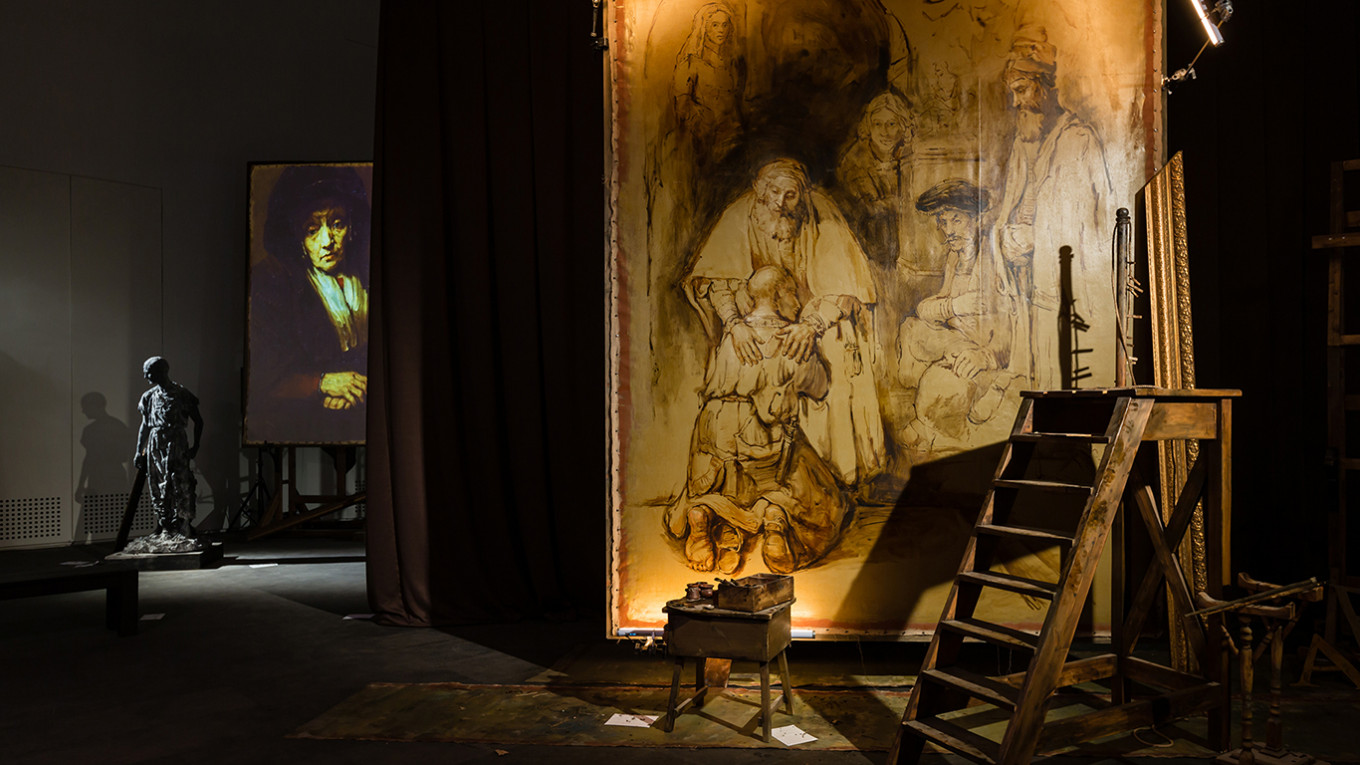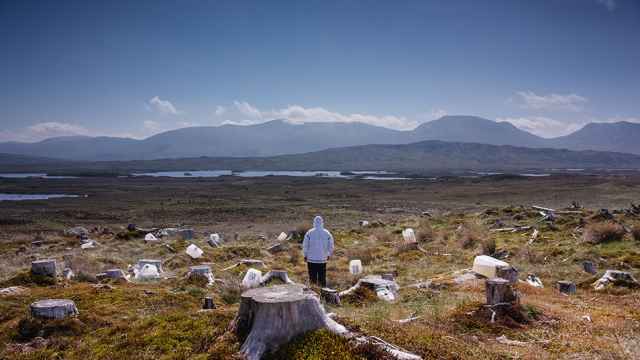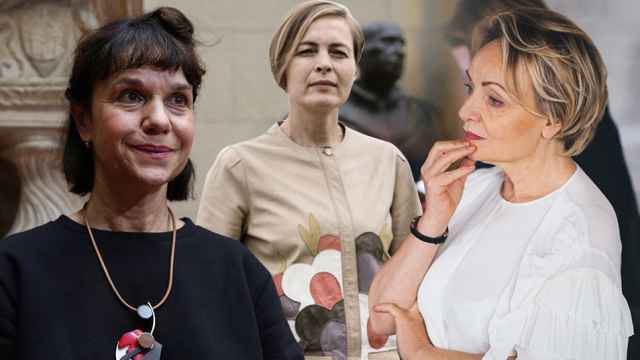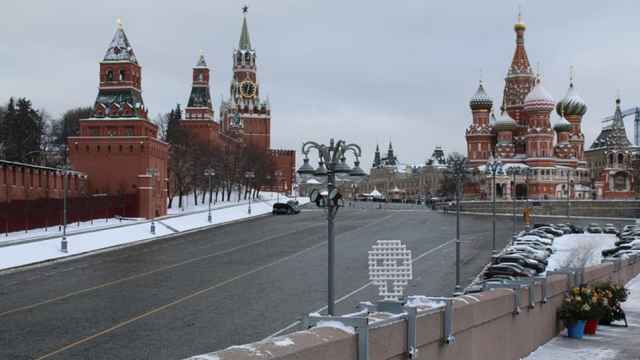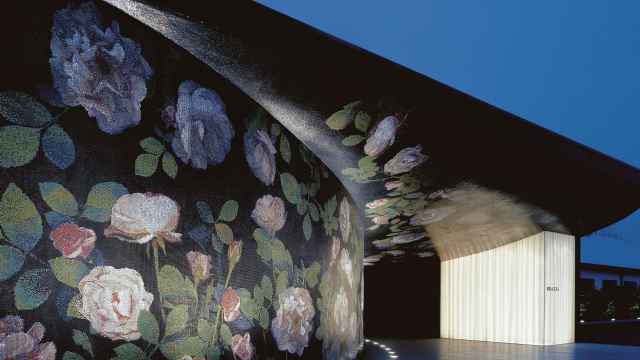Can a prodigal son be trusted? What lies behind the remorse? And what really made this tormented soul return?
These are the questions raised by a multimedia installation created by award-winning filmmaker Alexander Sokurov and inspired by Rembrandt’s painting “The Return of the Prodigal Son,” which is held in the collection of the Hermitage. The exhibition, called “Luke 15: 11-32. Rembrandt. Dedication. Sokurov” opened in the White Hall of the General Staff Building of the State Hermitage Museum on Tuesday.
The serene mood of the New Testament story is torn in pieces by the visually and emotionally explosive display of the installation’s video pieces, sculpture, painting and music. The White Hall is engulfed in flames, as videos flash images from the walls: soldiers burnt alive, piles of corpses, rivers of blood and skeletal buildings destroyed by bombs. Reflected in large mirrors, the flames merge with sculptures by Vladimir Brodarsky and Yekaterina Pilnikova: images of the father and the son that stepped out of the frame of Rembrandt’s painting straight into modern warfare. The musical score created by St. Petersburg composer Andrei Sigle juxtaposes the sounds of cannon fire with the serene and gentle tones of a Russian horn orchestra.
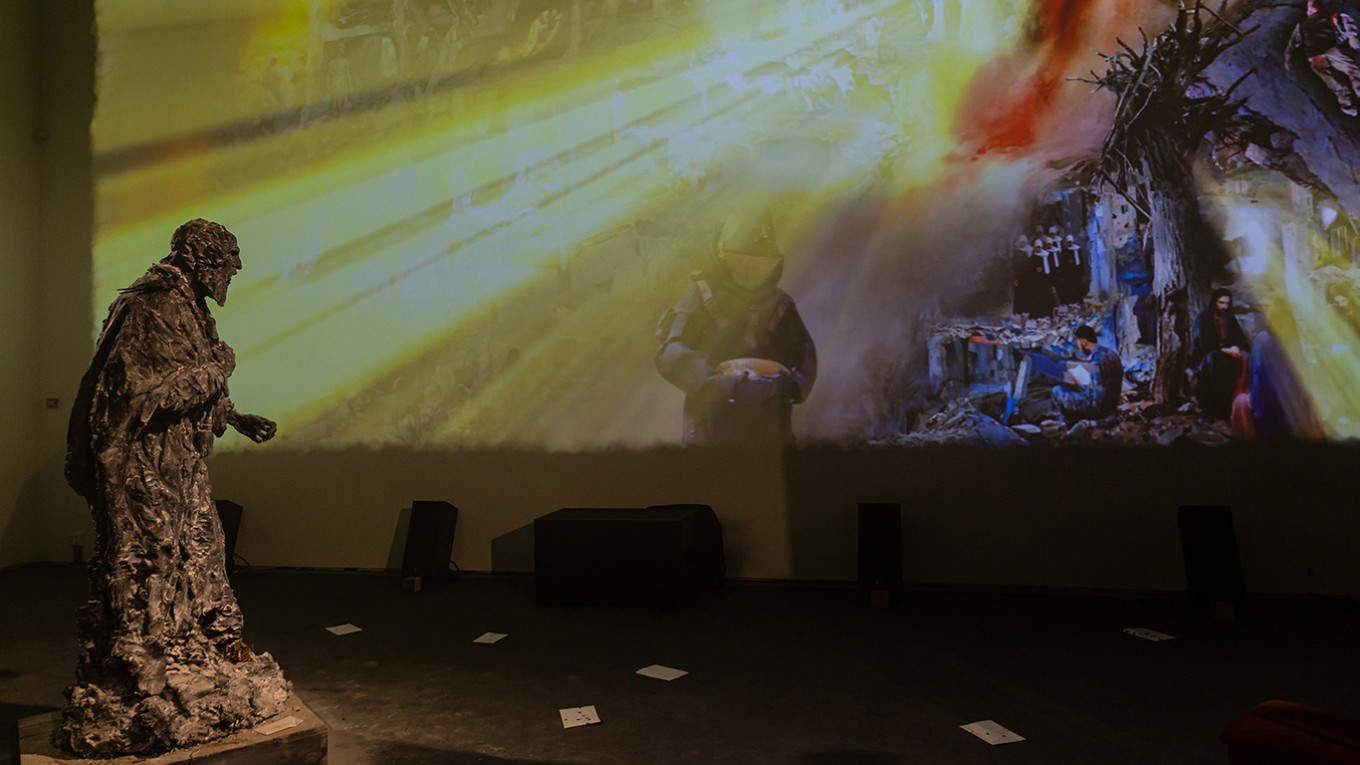
Sokurov’s story is one of a torn connection between a father and son, a painful return and an uncertain future. This is very different than the relationship in the director’s 2003 film “Father and Son,” where the spiritual connection between the main characters is deep, solid and meaningful.
“Pain, sorrow, grief and torment do change people, sometimes irreversibly,” Sokurov said. “And we face the challenge of how to greet those who return. With love, indeed, but also with caution. The truth is that we have no idea what they hide behind the surface. Are they going to leave us again? What made them come back?”
“I have seen both war and peace, and always I see human stories in the finest artworks, regardless of the time a piece was created,” Sokurov said. “And I feel that all these great artists belong to me, they are part of my life, however selfish this may sound. Rembrandt is mine, and El Greco is mine, I can’t survive without them. With this installation I am trying to tell a human story too — one that is genuinely resonant today.”
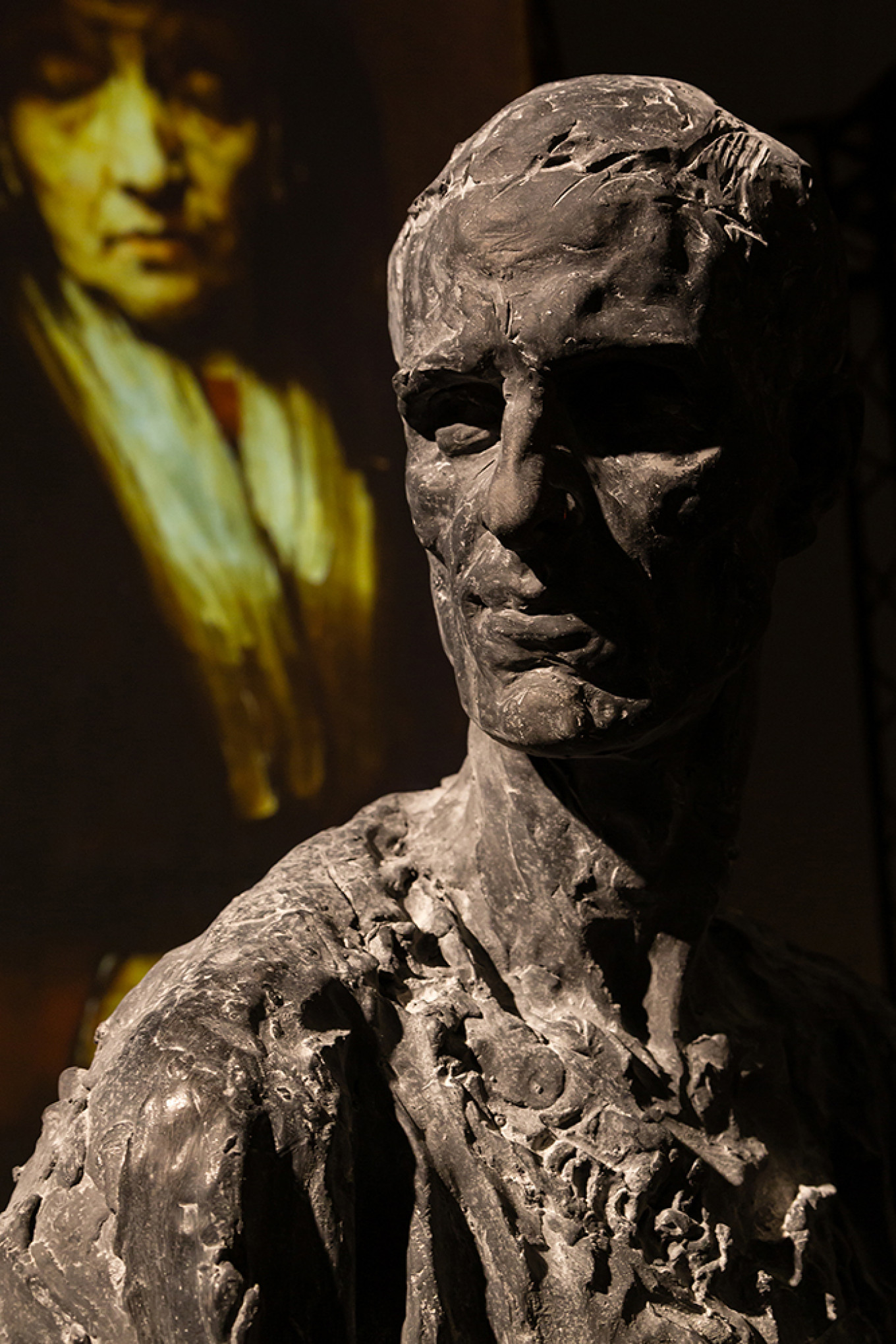
The mission of the museum
Alexander Sokurov and Mikhail Piotrovsky, who called “The Prodigal Son” the most important painting at the Hermitage today, share much more than fascination with Rembrandt’s philosophical masterpiece. They share a sense of a big museum as an ark and the belief that one of its missions is to nourish what Sokurov calls “a sense of evolution” — the ability of new artists to connect with the legacy that has been created before them and the ability of viewers to relate to a piece of art regardless of when it was made.
“Art has no past indefinite tense,” Sokurov said. “It is crucial for a contemporary artist to look back and connect to all this immense legacy. Unfortunately, we have recently seen a collapse of these connections.”
In this sense, the Hermitage project is an attempt to create a living connection between Rembrandt’s masterpiece, talented young artists and the audiences: the painting comes out of the frame, becomes alive and slips into the most heartrending modern context.
Poitrovsky said, “I am often asked if an exhibit would appeal to an unprepared viewer; I would argue that there is no such a thing as an unprepared spectator. There are simply different levels of understanding."
Sokurov has had a close affiliation with the Hermitage for many years, most notably with his 2002 film “The Russian Ark,” the 96-minute film made in a single shot at the museum.
In his new installation for the museum he was the author of sketches, video pieces, sculpture and a painting inspired by Rembrandt’s “The Prodigal Son” that were all done to his specifications by a group of young sculptors and artists. The installation was curated by Mikhail Piotrovsky, the director of the State Hermitage Museum, and Marina Schultz.
The exhibition is an expanded version of the installation presented in the Russian Pavilion at the 58th Venice Biennale of Contemporary Art in 2019. Piotrovsky said that the work would continue to tour and to change. “The Hermitage installation is the next incarnation of the ‘Commentary to Rembrandt,’ and after it is shown here, it will l travel to new locations. In each new place it will be fresh and honest, like an open wound,” Poitrovsky said.
The exhibition will run until November 1. For more information about this and other exhibitions, see the Hermitage site.
A Message from The Moscow Times:
Dear readers,
We are facing unprecedented challenges. Russia's Prosecutor General's Office has designated The Moscow Times as an "undesirable" organization, criminalizing our work and putting our staff at risk of prosecution. This follows our earlier unjust labeling as a "foreign agent."
These actions are direct attempts to silence independent journalism in Russia. The authorities claim our work "discredits the decisions of the Russian leadership." We see things differently: we strive to provide accurate, unbiased reporting on Russia.
We, the journalists of The Moscow Times, refuse to be silenced. But to continue our work, we need your help.
Your support, no matter how small, makes a world of difference. If you can, please support us monthly starting from just $2. It's quick to set up, and every contribution makes a significant impact.
By supporting The Moscow Times, you're defending open, independent journalism in the face of repression. Thank you for standing with us.
Remind me later.


